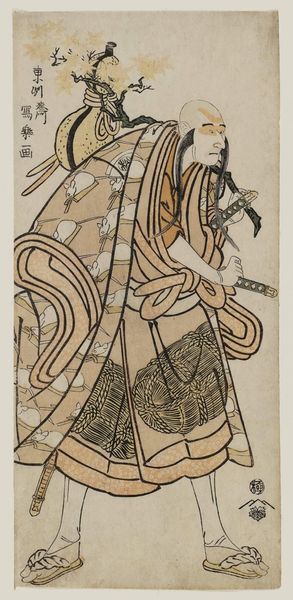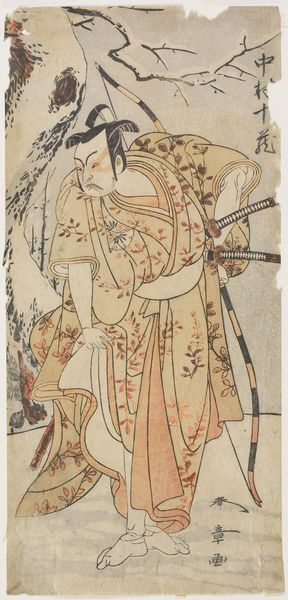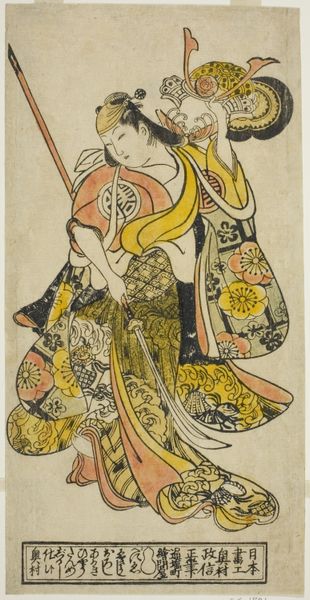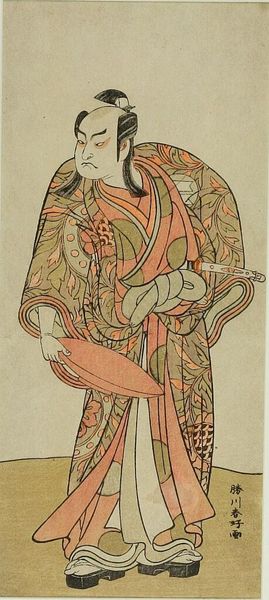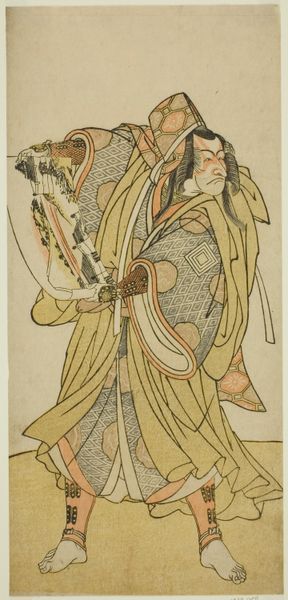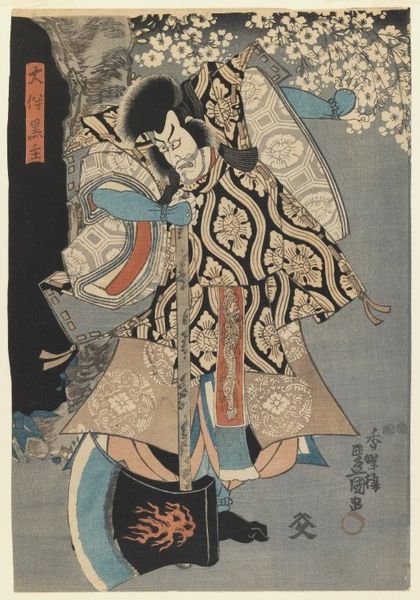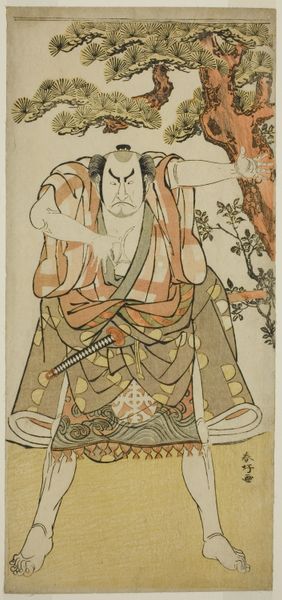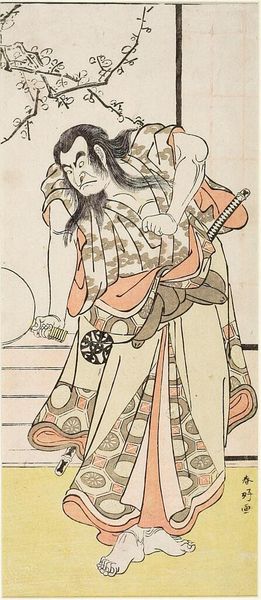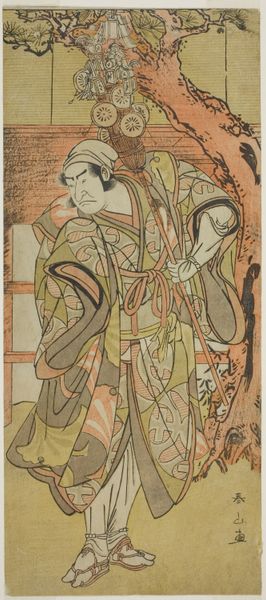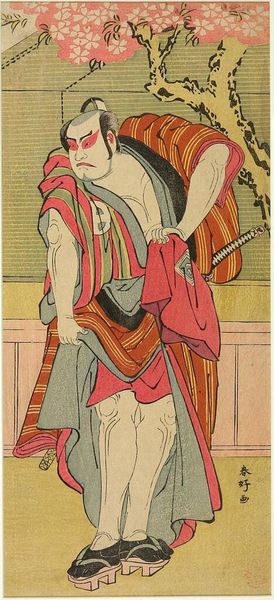
Kabuki Actor Ichikawa Danjūrō VI as Mimana Yukinori in Otokoyama Oedo No Ishizue 1795
0:00
0:00
print, woodblock-print
#
portrait
# print
#
asian-art
#
ukiyo-e
#
figuration
#
woodblock-print
#
line
#
history-painting
Copyright: Public domain
Curator: Look at the sheer power in this figure’s stance. Editor: Yes, the weightiness of the costume—the layers! It almost feels like he's carrying the weight of history itself on his shoulders. I can't help but think of societal expectations imposed on performers and the performance of masculinity. Curator: That's a fantastic connection. What we are observing here is "Kabuki Actor Ichikawa Danjūrō VI as Mimana Yukinori in Otokoyama Oedo No Ishizue," a woodblock print crafted around 1795 by Tōshūsai Sharaku. Beyond its aesthetic appeal, this work is so revealing of its cultural context. Editor: The costume! It screams opulence, doesn't it? The circular emblems repeated throughout feel incredibly symbolic...like the man is meant to wear multiple symbolic shields of social armor. What can you tell me about this? Curator: The crests or “mon” certainly speak volumes. These designs identified families and their allegiances. Think about how deeply ingrained those symbols were. Also, consider the role of the Kabuki theater itself—often a space for social commentary and expression when direct political criticism was stifled. Sharaku emerged during a time of socio-economic upheaval and political change and produced works that reflected the complexities of cultural expression at that time. Editor: This feels like looking into a mirror of time, right? I see themes of status, identity, the weight of expectation… and those things continue to resonate so profoundly today, don't they? And those branches at the upper corner – could that symbol be a commentary on the ephemeral nature of such fame or of identity itself? It makes the print itself appear suspended in time. Curator: Absolutely. Those subtle visual cues enrich the narrative. They serve as constant reminders of change and transformation inherent in identity. Sharaku left us a poignant exploration of self, artifice, and society. Editor: Exactly! I am so grateful for opportunities to see works such as these that highlight and call for a continuation of discourse between past, present and the meaning such context has for cultural progress.
Comments
No comments
Be the first to comment and join the conversation on the ultimate creative platform.

